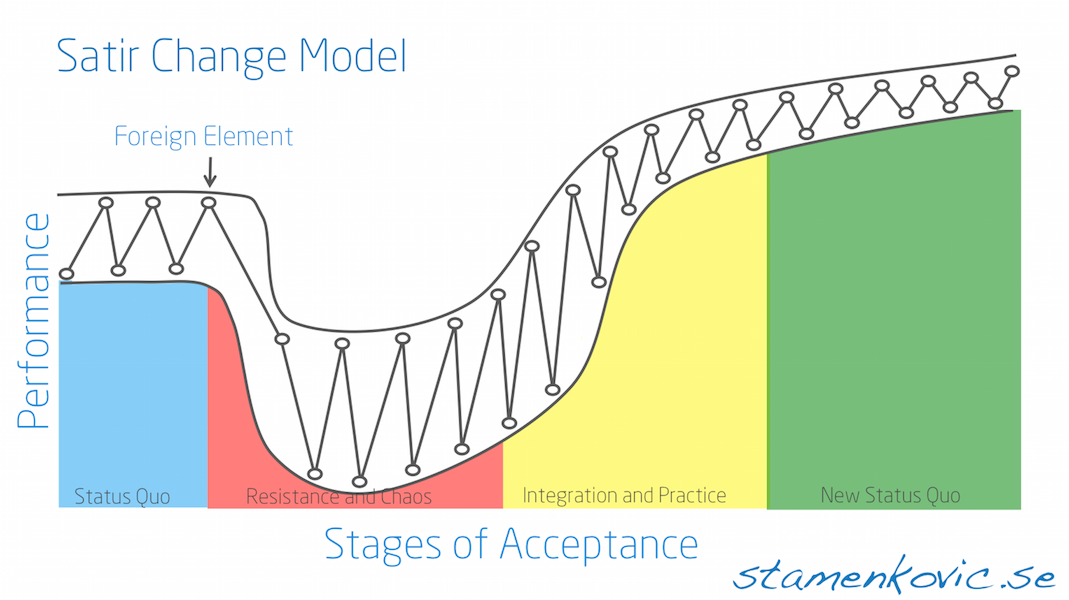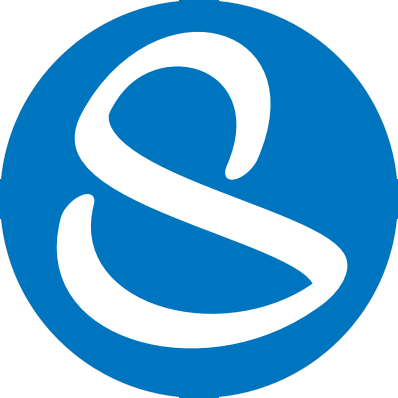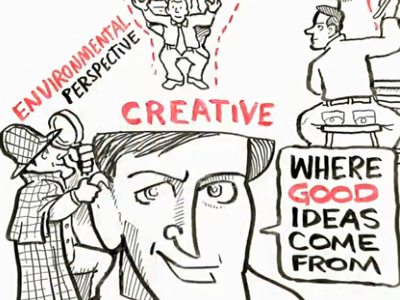Change will happen. Change will affect everyone – including you. Change is constant happening. The way to manage change is to manage the “dip” in performance that occurs every time a new change is introduced. Managing it means that you will have to try to make the dip in performance as small as possible! If it is not managed and the dip gets too profound – you might be certain that you will have a very hard time implementing your change and making it happen!
Satir Model





